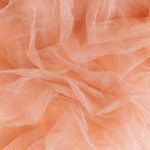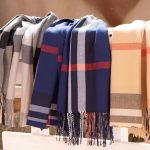When choosing summer clothes for your baby, breathability is key to keeping them comfortable. You might have come across muslin and gauze fabrics, both praised for their softness and airflow. But which one truly lets your little one stay cool without sacrificing comfort? Understanding the subtle differences between these materials can help you make the best choice for your baby’s delicate skin and the summer heat.
Table of Contents
Key Takeaways
- Gauze has a looser weave than muslin, making it lighter and more breathable for hot summer days.
- Muslin’s tighter weave offers better fabric density, suitable for moderate temperatures and layered use.
- Both fabrics wick moisture away, helping keep babies cool, dry, and comfortable in warm weather.
- Gauze’s airy, crinkled texture maximizes airflow, reducing sweating and irritation during summer.
- Muslin softens with washing, maintaining breathability while offering a cozy feel for transitional seasons.
Characteristics of Muslin Fabric
Muslin fabric offers a soft, breathable texture that’s perfect for your baby’s sensitive skin.
Muslin’s soft, breathable texture is ideal for keeping your baby’s sensitive skin comfortable and happy.
You’ll appreciate muslin’s durability, as it withstands frequent washes without losing its gentle feel or shape.
This fabric’s muslin versatility means you can use it for swaddles, blankets, burp cloths, and even lightweight clothing, making it a must-have in your baby gear.
Its loosely woven cotton fibers guarantee excellent airflow, helping to regulate your baby’s temperature and prevent overheating.
Plus, muslin’s natural texture becomes softer over time, enhancing comfort.
When you choose muslin, you get a fabric that combines strength with a delicate touch, providing both practicality and comfort for your little one in everyday use.
Features of Gauze Fabric
Although gauze fabric shares some similarities with muslin, it stands out for its ultra-lightweight and airy weave that’s perfect for keeping your baby cool.
You’ll notice that gauze texture is more open and crinkled, giving it a soft, breathable feel against delicate skin. This makes it ideal for summer wear and swaddling when you want maximum airflow.
Despite its lightness, gauze durability is impressive—it can withstand frequent washing without losing shape or softness.
You’ll appreciate how gauze maintains its gentle touch over time, resisting wear better than you might expect from such a fine fabric.
When you choose gauze, you’re opting for a fabric that balances breathability with lasting quality, making it a smart choice for your baby’s comfort.
Comparing Breathability of Muslin and Gauze
You’ll notice muslin and gauze have different fabric weaves that impact airflow and cooling.
Understanding these differences helps you choose the best option for your baby’s comfort.
Let’s compare how each fabric promotes breathability and keeps your little one cozy.
Fabric Weave Differences
When you choose fabric for your baby, understanding the weave can make a big difference in comfort and breathability.
Muslin and gauze differ mainly in their weave patterns and fabric density, which impacts how breathable they feel against your baby’s skin.
Muslin typically features a tighter weave, giving it higher fabric density, while gauze is woven more loosely, making it lighter and airier.
Here’s what you should know:
- Muslin’s tighter weave offers durability but less breathability.
- Gauze’s loose weave creates a soft, breathable texture.
- Fabric density affects how heat and moisture pass through.
- Weave patterns determine softness and drape, influencing comfort.
Knowing these differences helps you pick the best fabric for your baby’s summer wear and daily comfort.
Airflow and Cooling
Both muslin and gauze offer unique airflow qualities that affect how well they keep your baby cool.
When you look at airflow dynamics, muslin’s tighter weave provides a gentle balance of breathability and protection, allowing steady air circulation while retaining softness.
Gauze, on the other hand, features a looser weave that enhances airflow, making it excellent for maximum ventilation.
This difference impacts their cooling properties—gauze tends to cool faster due to increased air passage, which works well in hotter climates or active summer use.
Muslin’s slightly restricted airflow still offers good ventilation but retains warmth better, which might be preferable in milder weather.
Understanding these airflow dynamics helps you choose the right fabric to keep your baby comfortable and cool during summer months.
Comfort for Babies
Comfort plays an essential role in choosing between muslin and gauze for your baby, especially regarding breathability. Both fabrics offer unique benefits for your baby’s sensitive skin and help with temperature regulation.
When deciding, consider these points:
- Muslin’s loose weave allows excellent airflow, keeping baby skin cool and dry.
- Gauze is lightweight and soft, reducing irritation and promoting comfort.
- Both fabrics wick moisture away, aiding temperature regulation during warmer months.
- Muslin tends to soften after washing, enhancing comfort without compromising breathability.
You want a fabric that feels gentle against your baby’s skin while preventing overheating.
Muslin and gauze both excel, but muslin’s breathability often edges out gauze for summer comfort. Ultimately, your choice should prioritize softness and airflow to keep your baby cozy and cool.
Suitability of Fabrics for Baby Clothing
When choosing fabric for your baby’s clothes, softness and comfort are key to keeping them happy.
You’ll also want materials that offer good cooling and breathability, especially during warmer months.
Let’s look at how muslin and gauze stack up in these areas.
Softness and Comfort
Softness plays an essential role in choosing fabrics for your baby’s clothing, as delicate skin demands gentle materials. When you prioritize fabric softness, you enhance baby comfort, reducing the risk of irritation or discomfort.
Both muslin and gauze offer unique textures, but understanding their softness helps you decide which suits your little one best.
Consider these factors for fabric softness and comfort:
- Natural fibers like cotton in muslin provide a smooth, gentle touch against skin.
- Gauze’s open weave feels slightly rougher but remains lightweight and breathable.
- Repeated washing softens both fabrics, improving comfort over time.
- Muslin’s softness often makes it ideal for sensitive newborn skin.
Choosing the right fabric guarantees your baby stays cozy and happy throughout the day.
Cooling and Breathability
Although both muslin and gauze are breathable fabrics, they differ in how well they keep your baby cool.
Muslin’s loose weave allows excellent airflow, making it one of the best breathable materials for summer comfort. It quickly wicks moisture away, helping your baby stay dry and comfortable on hot days.
Gauze, while also lightweight, has a slightly denser weave, which may trap more heat but still offers decent breathability. If you want maximum cooling, muslin is your go-to fabric.
However, gauze provides a bit more warmth, which can be useful in fluctuating temperatures. When choosing baby clothing, prioritize breathable materials like muslin to guarantee your little one enjoys ideal summer comfort without overheating or irritation.
Ideal Seasonal Uses for Muslin and Gauze
Because muslin and gauze each have unique textures and breathability, you can choose the best option based on the season to keep your baby comfortable.
Their fabric versatility supports various seasonal styles, making them excellent choices for year-round wear. Muslin’s tighter weave offers gentle warmth during cooler months, while gauze’s airy structure excels in hot weather.
Consider these seasonal uses:
- Choose muslin for spring and fall layers, balancing warmth and breathability.
- Opt for gauze in summer to maximize airflow and minimize sweating.
- Use muslin blankets in winter as cozy wraps without overheating.
- Select gauze swaddles in sunny weather to protect without trapping heat.
Practical Applications and Care Tips
Understanding when to use muslin or gauze is just one part of keeping your baby comfortable.
You’ll find muslin great for swaddling and lightweight blankets, while gauze works well for burp cloths and summer wraps.
To maintain their softness and breathability, follow gentle washing techniques—use cold water and mild detergent, avoiding fabric softeners that can reduce absorbency.
Use cold water and mild detergent, skipping fabric softeners to keep softness and breathability intact.
After washing, air dry them or tumble dry on low heat to prevent shrinking.
When it comes to fabric storage, keep muslin and gauze in a cool, dry place, folded neatly to avoid wrinkles and maintain their texture.
Proper care guarantees these fabrics stay soft and durable, so your baby enjoys maximum comfort season after season.
Frequently Asked Questions
Can Muslin or Gauze Fabrics Be Dyed Easily at Home?
Dyeing muslin or gauze is like painting on a soft canvas; you’ll find dyeing techniques straightforward. Just remember, you’ll need gentle fabric care to keep colors vibrant and prevent delicate fibers from wearing out fast.
Are Muslin and Gauze Fabrics Environmentally Sustainable Options?
You can choose muslin and gauze as sustainable options since they often come from biodegradable materials and sustainable sourcing. Just make sure to check the brand’s practices to confirm their environmental impact aligns with your values.
How Do Muslin and Gauze Fabrics React to Repeated Washing?
You’d think these fabrics could survive a thousand wash cycles! Both muslin and gauze offer decent fabric durability, but repeated washing softens them. Just watch for any shrinking or fraying effects to keep them looking great.
Which Fabric Is Better for Sensitive Adult Skin, Muslin or Gauze?
You’ll find muslin softness more soothing if you have sensitive skin, as gauze irritation can occur due to its looser weave. Choosing muslin helps you avoid discomfort and keeps your skin calm throughout the day.
Can Muslin or Gauze Fabrics Be Used Effectively for Diaper Covers?
You can use muslin or gauze for diaper cover functionality, but keep in mind their fabric absorbency is limited. They’re lightweight and breathable, great for outer layers, but you’ll need extra absorbent inserts underneath for leaks.
- Tetron Fabric for Marine Applications: Durability and Use Cases - June 18, 2025
- Tetron Fabric for Outdoor Furniture: Weather Resistance and Care - June 18, 2025
- Tetron Fabric for Wall Coverings: Style and Application Tips - June 18, 2025







